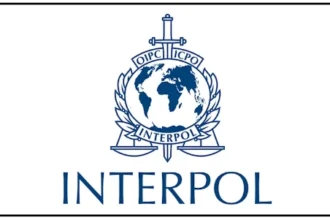The Commercial Revolution was a period of European economic expansion, colonialism, and mercantilism that lasted from the late Middle Ages into the early modern period, roughly from the 11th to the 18th century. From 11th century onwards there was a structural change in economy as a result of which regional, static and feudal economy of Europe transformed into a world, dynamic and capitalist economy. Even banking and currency system came into existence.
Factors behind growing commercial activities
1. Technological innovation
Some technological innovation in agriculture ensured better agrarian surplus, a part of which came to the market. Consequently, monetization of economy increased and it created rupture in feudal structure as lords preferred cash in place of service. As a result of which, a prosperous landed class came into existence and this class raised the demand for goods.
2. The role of crusades
Even crusades brought a major jerk in the economy. It opened trade route between North Western Europe and West Asia (Jerusalem). Thus, it gave a fresh boost to trade and Commerce.
3. Decline of Constantinople (1453)
It led to sea-voyages and also to discovery of new regions America, India and other parts of the world except Australia and interior region of Africa. Although America was discovered as a matter of chance but it proved much beneficial for European trading countries as it is through precious metal procured from America, Asian trade could have been sustained.
4. Exploration and Colonization
With the discovery of the Americas by Christopher Columbus in 1492 and the sea routes to Asia opened by Vasco da Gama in 1498, European nations sought new trade routes and colonial territories. These discoveries led to the establishment of overseas colonies, and a massive influx of wealth in the form of gold, silver, spices, and other goods.
How Did the Commercial Revolution Change Europe?
Major Changes Brought by the Commercial Revolution which are change Europe. These are follows-
The Shift from Feudalism to Capitalism
As trade boomed, wealth was no longer just tied to land ownership. Instead, merchants and bankers became some of the richest and most influential people in society. This helped pave the way for capitalism, where private businesses and individuals controlled trade and production, marking the slow decline of the medieval feudal system.”
Urbanization and the Growth of Trade Centers
Cities like Venice, Genoa, Antwerp, and Amsterdam became centers of commerce. Urban populations exploded as people moved to cities in search of better economic opportunities. These cities became key players in European and global trade.
The Price Revolution
With the influx of gold and silver from the New World, inflation became increase in Europe. This phenomenon, known as the Price Revolution, saw the prices of goods increase dramatically. While this inflation helped some people grow wealthier, it created difficulties for others, especially the working class, who struggled to keep up with rising prices.
Global Trade Networks
The Commercial Revolution saw the birth of global trade. For the first time in history, goods, ideas, and people moved across continents on a massive scale. The Atlantic, Indian, and Pacific Oceans became conduits for trade between Europe, Africa, Asia, and the Americas. Goods such as sugar, tobacco, coffee, and spices became staples of European markets.
Impact of Commercial Revolution
As we know, the Commercial Revolution brought structural change in Europe and this change paved the way for further changes. These changes are as follows –
Decline of Feudalism
Feudalism implied a hierarchical structure in which a series of intermediaries were bound together through loyalty and patronage. But technological progress as well as development of three-field system manifested surplus agrarian production. As feudal system was based on a self sufficient economy, surplus production made the feudal structure crumbled. In other words, as a result of growing monetization in economy feudal structure could not survive because landlords preferably started to demand money instead of free labour from tenants.
Rise of Autocratic Monarchy in Europe
As result of the decline of feudalism, which was a pan-European institution, European monarchs were most benefited. He tried to restore his power and also tried to demarcate a national boundary. Among these rulers, Henry VI and Henry VIII of Britain, Henry IV of France, Frederick the Great of Prussia and Joseph-II of Austria were prominent.
Rise of Capitalism
Decline of feudalism led to the rise of capitalism. Capitalism represented a different mode of production. While feudalism was a system based on agrarian system, limited exchange and personal loyalty but capitalism was based on money economy and profit-making. It does not assess the value of a product on the basis of its internal merit but on its demand. It functions on market mechanism. Even capitalism underwent different phases. Earliest phase of capitalism was commercial phase.
In this phase there was formation of mammoth seized trading companies which were procuring the products from one region and distributing them to others. Later, it entered into industrial phase and that of financial phase.
Rise of Middle Class
European society in medieval period was divided into three sections- aristocratic class, clergy class and commoners. But commercial activities gave birth to a new social class, mercantile class, which came to be characterized as the middle class.
Why Does the Commercial Revolution Matter?
The Commercial Revolution was a turning point in history. It marked the beginning of the modern economic system, introducing capitalism and international trade networks that still shape our world today. It is worth noting that earlier, whereas the European society was driven by the interest of the aristocratic as well as the clergy class, later it came to be guided by that of the middle class. The transformations in finance, trade, and society during this period set the stage for the Industrial Revolution and the globalized economy that defines the modern era.









